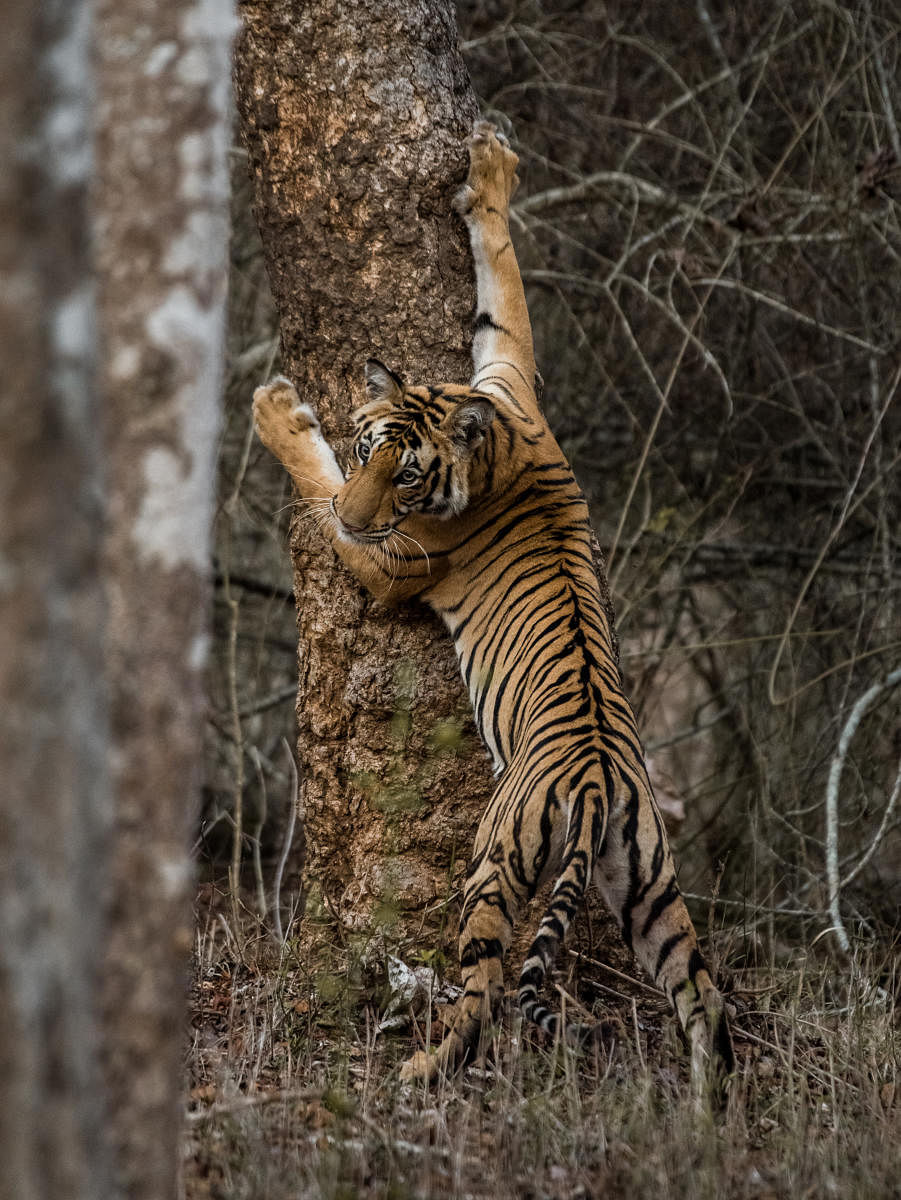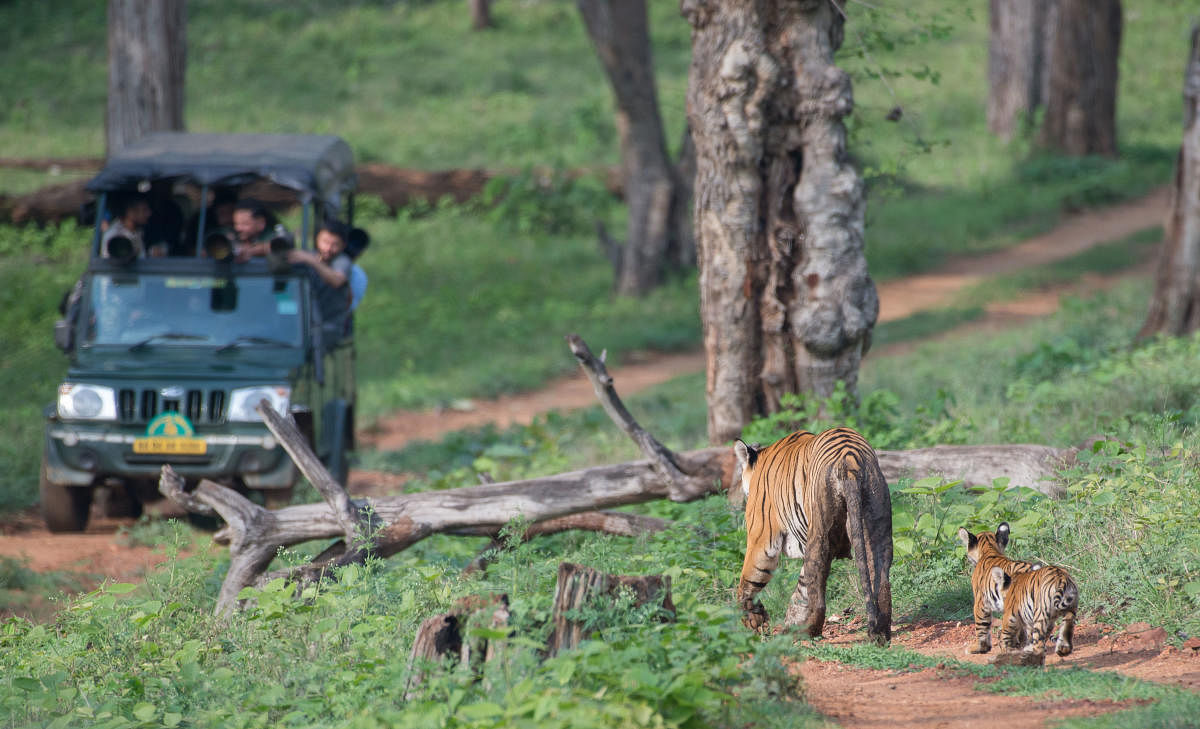

Every year, since 2010, July 29 is celebrated as International Tiger Day to raise awareness about tiger conservation. India is home to over half of the world’s tigers.
In 2010, India reportedly had 1,706 tigers, and this number increased to 2,226 in 2014. Isn’t a 30% increase in population in just four years remarkable? However, a study by an international team of researchers questioned the techniques used to estimate tiger populations in India and the accuracy of these numbers. Instead, they proposed a new mathematical model to determine tiger numbers accurately. Numbers drive most of the efforts and funds targeted at tiger conservation. However, numbers do not necessarily mean healthy, hearty populations that can successfully breed and thrive for years to come.
An alternative approach to monitoring tigers is to identify individuals and trace their health, family lineage and population. “Data generated from individuals can be used to estimate various parameters that help us understand the ecology, behaviour and evolutionary history of the populations,” says Prof Uma Ramakrishnan from the National Centre for Biological Sciences (NCBS), Bengaluru. “For instance, using the data on genetic variation, we can make inferences about connectivity between populations, changes in population size over time, inbreeding, assign parentage and so on,” she explains.
Scientists use molecular techniques to get deeper insights into the lives of tigers, often without harming or disturbing them. “Genetic studies help in understanding genetic diversity, an aspect that is important for the viability of a fragmented and isolated population in the long-term,” opines Dr G Umapathy, principal scientist at the Laboratory for the Conservation of Endangered Species, Hyderabad. These studies, he says, help understand the exchange of genes and movement of tigers between populations, their genetic uniqueness and evolutionary history shaped due to their environment.
On a tiger’s trail
During field visits, molecular scientists look for biological hints a tiger has left behind, akin to a detective hunting for clues at a crime scene. “Ideally, any biological material from the animal may be used to obtain DNA, including non-invasive sources such as faeces, shed hair and saliva, or invasive sources like skin and blood. However, the quality and quantity of the DNA obtained varies tremendously with the sample source and age. Fresh, invasive samples typically yield the best DNA”, explains Prof Ramakrishnan.
The DNA confirms the identity of the sample as that of a tiger, a piece of necessary information when looking at faeces, hair or small body parts. With additional data, we can also distinguish between or identify unique individuals, derive the minimum number of tigers in a park and monitor their population.
It isn’t easy to hunt for these clues amidst dense forests. Looking for tiger scat is straightforward, and for hair, scientists rely on those left behind when tigers scratch their claws on trees. In some cases, saliva and fur are retrieved from an abandoned carcass. Scientists extract DNA from these samples and look for small fragments, called microsatellite markers that show variations to the level of individuals. However, this approach is expensive, error-prone and makes it difficult to share data across laboratories.
In a recent study, researchers at NCBS, in collaboration with those from Stanford University, USA, have proposed a cost-effective alternative for analysing DNA samples. “It takes advantage of newer sequencing technologies that can be used to process hundreds of samples in parallel,” says Dr Meghana Natesh, a researcher at NCBS. This method amplifies a class of genetic markers, known as single nucleotide polymorphisms, which are abundant in the DNA and hence, can reflect genome-wide differences reliably than previously used methods. “The new method gives us access to more genetic data much faster, making genetic monitoring much more efficient,” she explains. The researchers suggest that their approach can be used by anyone to monitor tigers across their range.
Recent studies have shown a concerning trend among tigers in India — they are heavily stressed. “Stress has severe implications on tiger populations in the long-term, especially on reproductive fitness. There are many proven examples to show how stress affects biological systems including loss of immunity, growth and muscular atrophy,” says Dr Umapathy.
Scientists look for specific chemicals, called faecal glucocorticoid metabolites, in tiger scat to estimate stress levels. Higher levels of these chemicals indicate higher stress in an animal’s environment, which could be natural or anthropogenic. A related study compared the concentrations of these chemicals in the faecal matter of Russia’s Amur tigers and India’s Bengal tigers. They found that Bengal tigers were more stressed than Amur tigers, possibly due to their smaller territories and unsustainable tourism practices.
Tiger tourism generates significant revenue for the government and private sectors in India. The forests in central India are known for tiger sightings due to high population densities and forests that provide more visibility. Some argue that tiger tourism could help in conservation. However, a recent study found that tigers in these forests were more stressed during the tourist season than other times.
Increase in anthropogenic disturbances also leads to higher stress levels in tigers, says another study on reintroduced tigers in Sariska and Panna Tiger Reserves. “We found that stress was affecting the reproduction of tigers in Sariska,” says Umapathy.
Genetic studies to conservation
A significant threat to India’s tigers is poaching, where tigers are illegally hunted to meet the demand for their parts. Although anti-poaching camps and patrols are set up in forests across the country, incidents of poaching have been reported as recently as June 2019.
Molecular studies can help contain such activities through wildlife forensics. Here, scientists profile the DNA of seized body parts, like nails, teeth, and skin, and identify whether it is of a tiger. If so, the gender and the broad geographical area of its origin can also be traced with DNA. “Such information is highly valuable for the forest department and conservation practitioners to prioritise their efforts and for effective anti-poaching activities,” says Prof Ramakrishnan.
With developmental projects encroaching forests and corridors that connect them, the habitat of Bengal tigers is fragmented. As a result, small populations of tigers remain isolated and breed within themselves, resulting in limited variations in their genes—an alarming finding of a study. Such populations are highly susceptible to disease outbreaks that could wipe them out entirely. Hence, habitat connectivity across forests is imperative to conservation.
“Maintaining corridors is critical for long-term conservation of tigers as it would ensure movement and genetic exchange between the different tiger populations,” says Dr Prachi Thatte, a researcher from NCBS. “Our simulations suggest that unrestricted development will result in 25% lower genetic diversity and reduction in tiger numbers due to the extinction of several small populations in the landscape. We also find that having corridors would be important for sustaining the increase in tiger numbers in central India,” she details.
In summary, estimating tiger numbers is barely scratching the surface of conservation of tigers as a species. Addressing environmental stressors and facilitating genetic exchange among populations are crucial for a sustainable tiger population in the country. Regulating tourism practices with the focus on the welfare of these animals and restoration of forest corridors help too.
(The writers are with Gubbi Labs, Bengaluru)